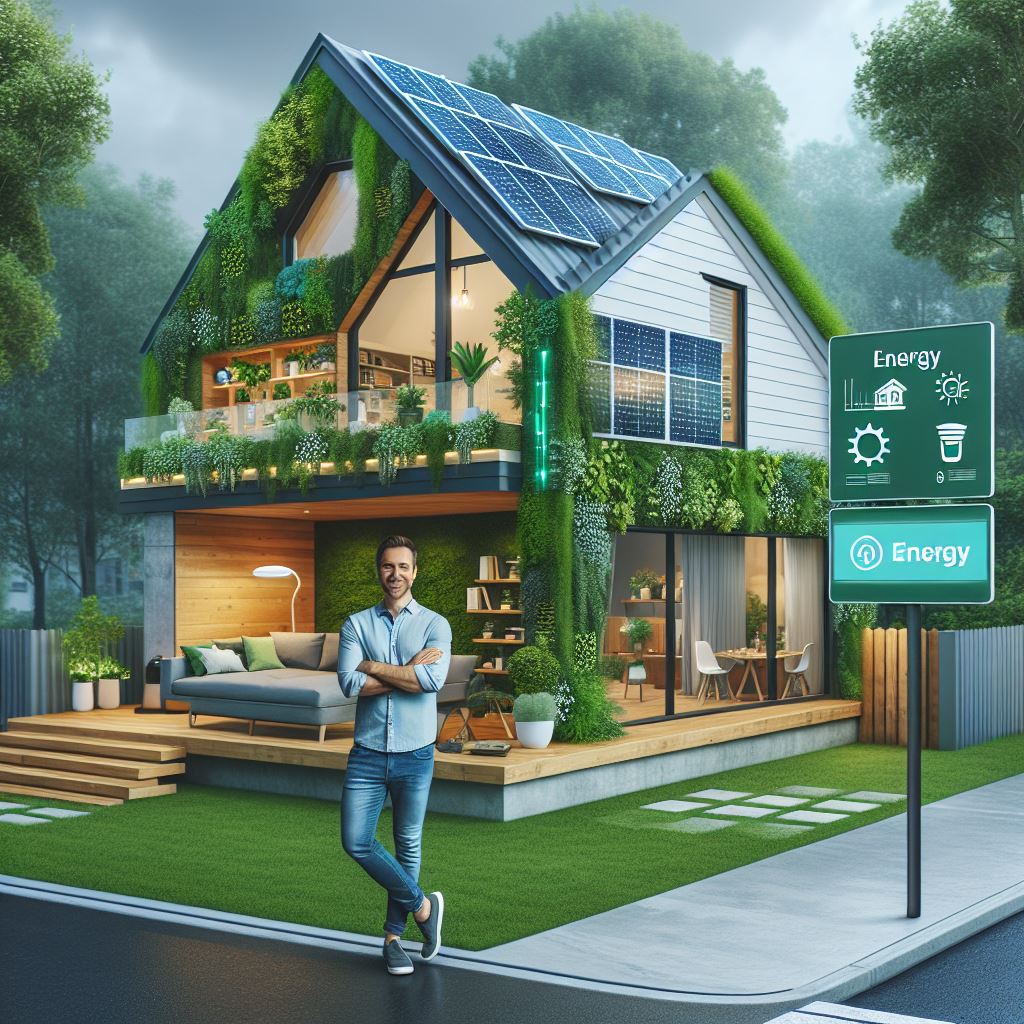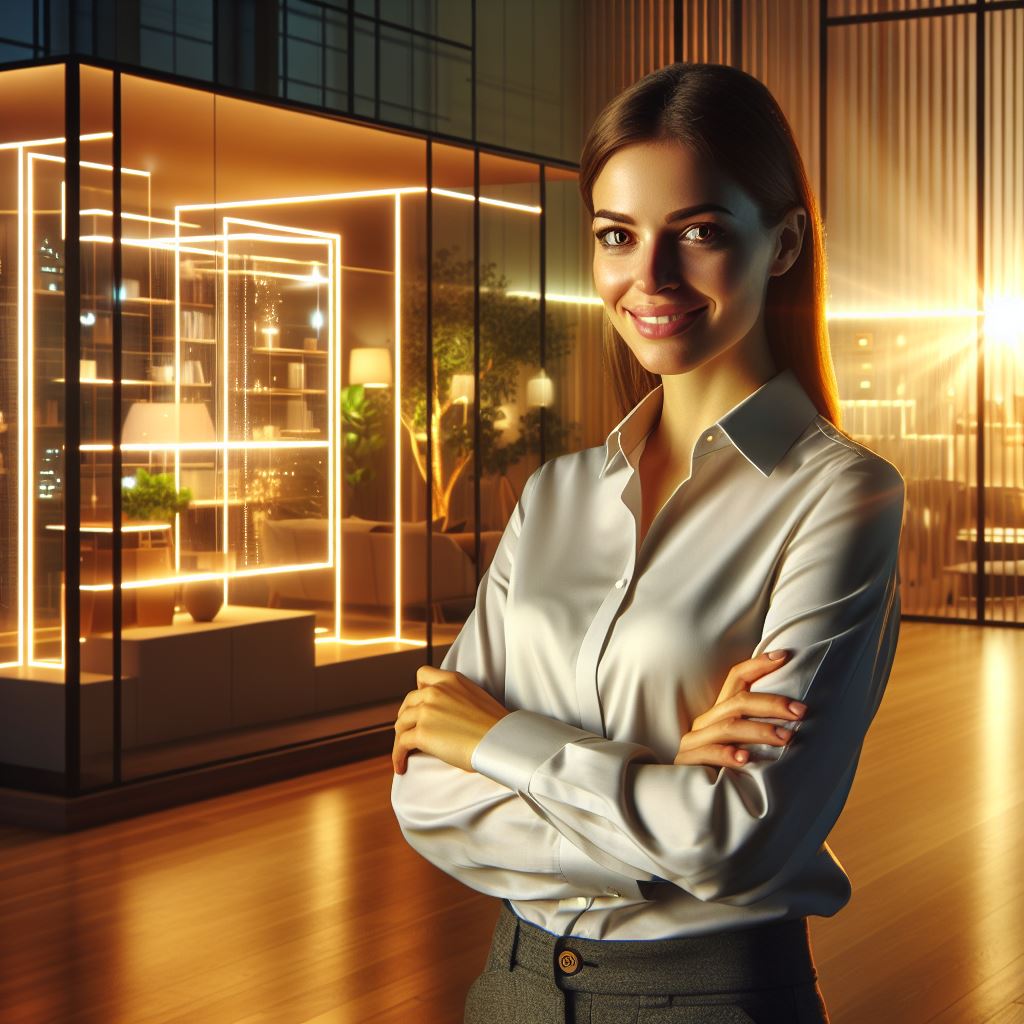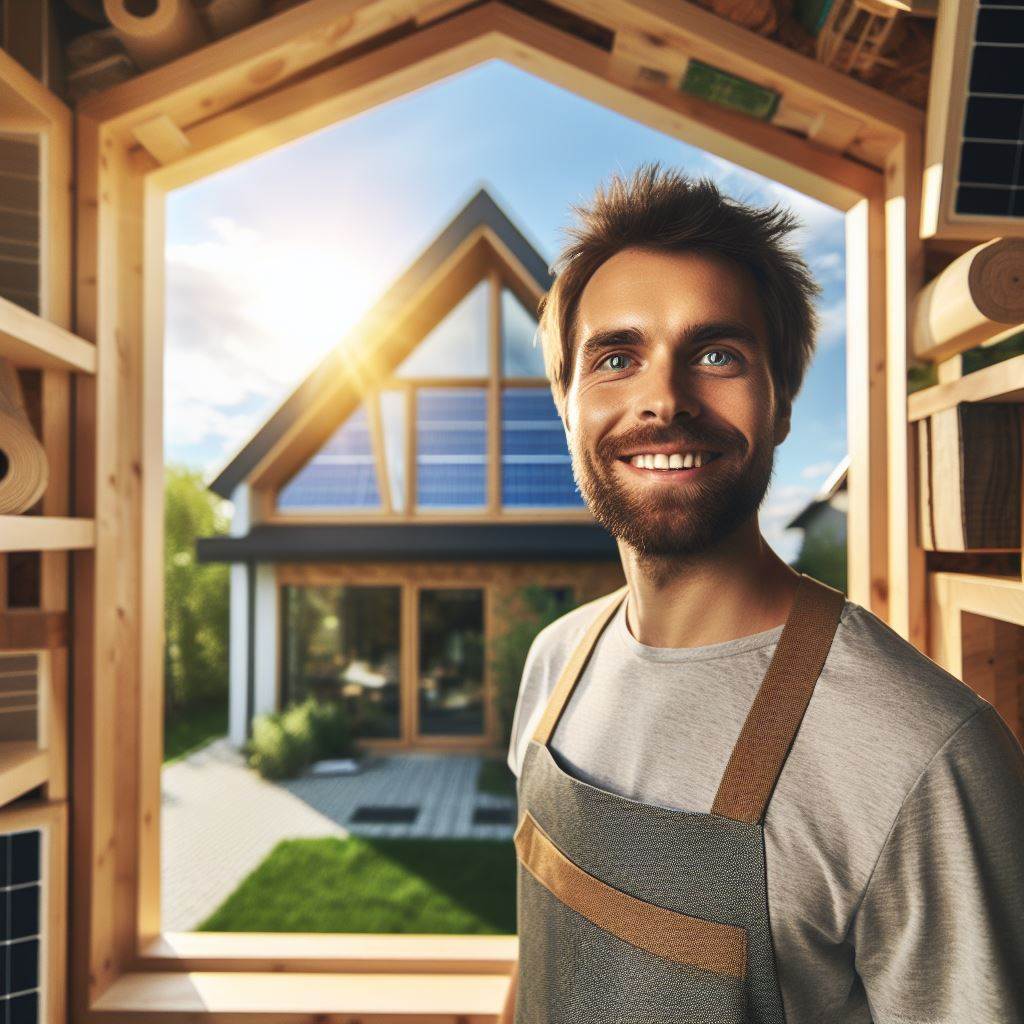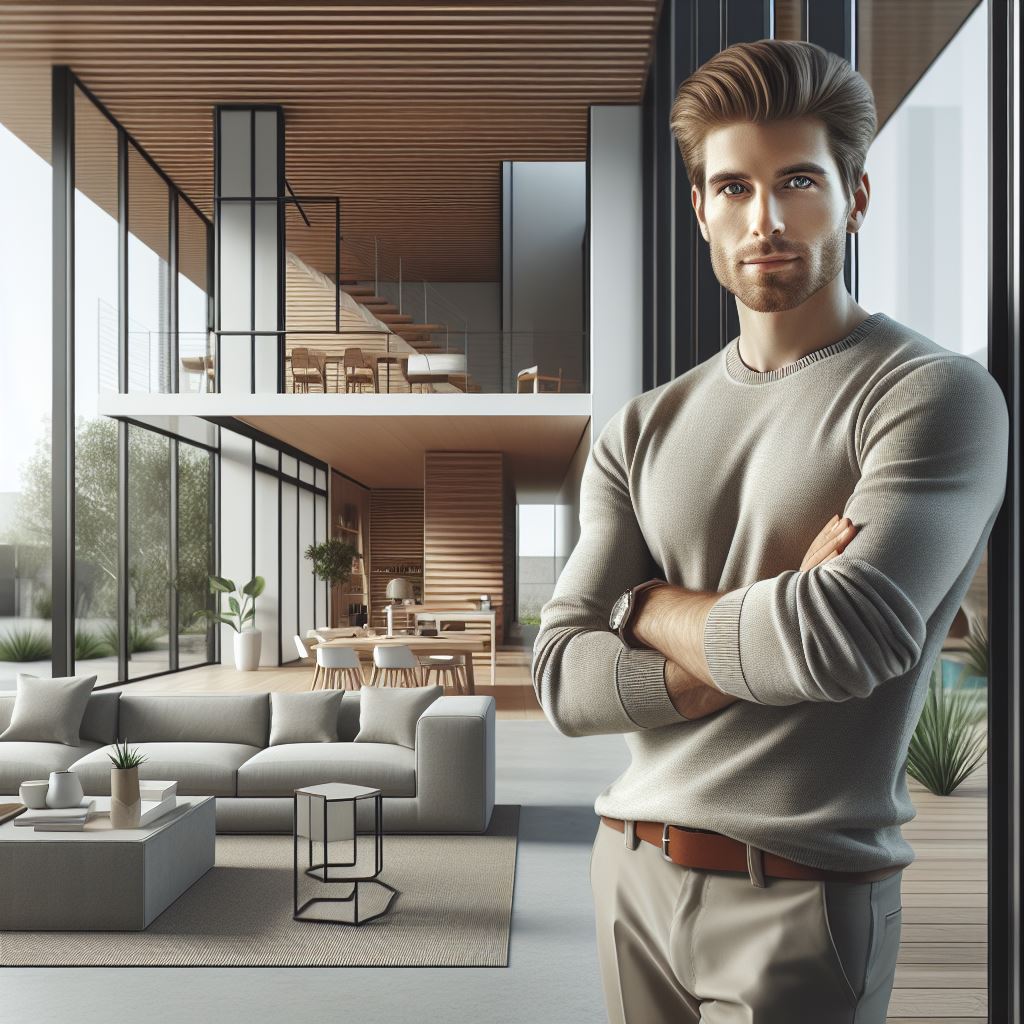Introduction
Green building refers to the practice of constructing structures that are environmentally friendly and resource-efficient.
The importance of green building in the US cannot be overstated.
It helps reduce the carbon footprint, conserve natural resources, and promote sustainable development.
This blog post will discuss top green building trends expected to dominate the US construction industry.
These trends will significantly impact future building design, construction, and operation methods.
By staying up to date with these trends, architects, builders, and homeowners can contribute to a more sustainable and energy-efficient built environment.
The main focus of this blog post will be on highlighting the top trends that will shape the green building industry in 2024.
From advancements in renewable energy technologies to the emergence of regenerative design principles, these trends will revolutionize the construction landscape.
We will explore the growing popularity of net-zero energy buildings, discuss the increasing role of building automation and smart technologies, and examine the push for greater material efficiency and circularity.
The discussion will also cover topics like green certifications and human health in building projects.
Overall, the aim of this blog chapter is to provide readers with valuable insights into the future of green building in the US.
Sustainable Materials and Construction Practices
Rise in the use of recycled and reclaimed materials
One of the top green building trends in the US for 2024 is the increased utilization of recycled and reclaimed materials.
Builders incorporate repurposed materials to reduce waste and conserve natural resources, recognizing their importance.
Sentences:
- Old wood from demolished buildings can be used for new flooring or furniture.
- Recycled steel is becoming a popular choice for structural elements of buildings.
- Using reclaimed materials not only reduces waste but also adds unique character to a structure.
Emphasis on locally sourced materials
Another key trend in sustainable building practices is the emphasis on using locally sourced materials.
This reduces the environmental impact associated with transportation and supports local economies.
Sentences:
- Choosing locally sourced materials reduces the carbon emissions from long-distance transportation.
- Builders are prioritizing the use of materials that are abundant in the local region.
- Supporting local suppliers contributes to the economic development of the community.
Adoption of innovative construction techniques for energy efficiency
Builders are increasingly adopting innovative construction techniques to maximize energy efficiency in buildings.
These techniques help reduce energy consumption and lower utility costs.
Sentences:
- Advanced insulation materials and techniques help buildings retain heat in winter and stay cool in summer.
- Solar panels and other renewable energy systems are being integrated into the design and construction process.
- Smart building systems are utilized to optimize energy usage and improve overall energy performance.
Incorporation of green roofs and living walls
An emerging trend in sustainable building practices is the incorporation of green roofs and living walls.
These features provide numerous environmental benefits and enhance the aesthetic appeal of a building.
Sentences:
- Green roofs reduce stormwater runoff, improve air quality, and provide insulation.
- Living walls contribute to improved indoor air quality and enhance biodiversity in urban areas.
- These features also offer visual appeal and create a connection with nature for building occupants.
In essence, sustainable materials and construction practices play a crucial role in shaping the green building trends in the US for 2024.
The increasing use of recycled and reclaimed materials, emphasis on locally sourced materials, adoption of innovative construction techniques for energy efficiency, and incorporation of green roofs and living walls are all contributing to a more sustainable and environmentally friendly built environment.
Read: US Commercial Real Estate: Interest Rates
Energy Efficiency and Renewable Energy
Integration of solar power systems in buildings
Expect an increase in the demand for solar power systems in buildings over the coming years.
Building owners are recognizing the long-term cost savings and environmental benefits associated with solar energy.
Design new buildings to integrate solar power or retrofit existing structures with solar panels for sustainable energy solutions.
By harnessing the power of the sun, buildings can generate their own clean and renewable energy.
Solar panels can be installed on rooftops, facades, or in open spaces to maximize energy production.
Advancements in solar technology have made solar panels more efficient and cost-effective.
Incentives and government policies, such as tax credits and grants, further promote the adoption of solar power systems.
The integration of solar power in buildings reduces reliance on fossil fuels and decreases greenhouse gas emissions.
Installing solar power systems can also increase the value and marketability of a building.
As solar technology continues to improve, it will become an essential component of green building practices in the future.
Increased use of energy-efficient lighting and appliances
- The use of energy-efficient lighting and appliances is becoming a standard practice in green buildings.
- LED lights are highly energy-efficient and have a longer lifespan compared to traditional incandescent bulbs.
- LED lights also produce less heat, reducing the load on cooling systems in buildings.
- Energy-efficient appliances, such as ENERGY STAR-rated refrigerators and HVAC systems, consume less electricity.
- Replacing outdated appliances with energy-efficient models can result in significant energy savings.
- Building codes and regulations are encouraging the use of energy-efficient lighting and appliances.
- Energy-efficient products are readily available in the market, making it easier for building owners to adopt them.
- Increased use of energy-efficient lighting and appliances contributes to a reduction in energy consumption and carbon footprint.
- Smart controls and sensors can be integrated with lighting and appliances to optimize energy usage.
- Energy audits can help identify areas for improvement and guide the selection of energy-efficient products.
Advancements in energy management systems
- Energy management systems (EMS) are becoming more sophisticated and customizable.
- EMS allow building operators to monitor and control energy usage in real-time.
- Data analytics and machine learning algorithms enable EMS to optimize energy consumption based on building occupancy and usage patterns.
- Building owners can remotely access and make adjustments to the EMS for optimal energy performance.
- EMS can identify energy efficiency opportunities, such as identifying energy-wasting equipment or detecting anomalies in energy consumption.
- Integration of EMS with other building systems, such as HVAC and lighting, allows for comprehensive energy management.
- By optimizing energy usage, EMS can reduce energy costs and improve overall building performance.
- Advancements in EMS technology make it easier for building owners to track and report energy usage for compliance and certification purposes.
- Implementation of EMS promotes a proactive approach to energy management and encourages continuous improvement.
- As buildings become smarter and more connected, the role of EMS in energy efficiency will continue to expand.
Implementation of smart building technologies for energy conservation
- Smart building technologies are revolutionizing the way energy is managed and conserved in buildings.
- Sensors and automation systems can regulate lighting, HVAC, and other systems based on occupancy and environmental conditions.
- Smart thermostats can learn occupancy patterns and adjust temperature settings accordingly to save energy.
- Building automation systems can optimize energy usage by coordinating various building systems.
- Real-time monitoring of energy consumption allows for immediate corrective actions and energy-saving opportunities.
- Internet of Things (IoT) devices can gather and analyze data to identify energy efficiency opportunities.
- Smart meters provide detailed energy usage information, allowing building owners to make informed decisions regarding energy conservation measures.
- Intelligent algorithms can predict energy demand and supply to optimize energy usage and reduce reliance on the grid.
- Building automation systems and smart technologies create a more comfortable and energy-efficient environment for occupants.
- The integration of smart building technologies will continue to drive energy conservation efforts in the future.
Read: 2024 Healthcare Real Estate in the US
Net Zero and Zero Carbon Buildings
Growing popularity of net-zero energy buildings
Net-zero energy buildings have gained significant traction in the US construction industry.
These buildings aim to produce as much energy as they consume over the course of a year.
Many organizations and individuals are recognizing the benefits of net-zero energy buildings.
Government policies such as energy efficiency mandates have contributed to the rise of net-zero buildings.
Technological advancements and cost reductions in renewable energy sources have made net-zero buildings more feasible.
Strategies for achieving zero carbon emissions in buildings
- Reducing energy consumption through energy-efficient designs and systems is crucial for zero carbon buildings.
- Utilizing renewable energy sources like solar and wind power can offset carbon emissions.
- Implementing energy management systems and smart technologies enable better energy utilization.
- Improving insulation, glazing, and ventilation systems can enhance energy efficiency and reduce carbon footprint.
- Adopting sustainable materials, such as recycled and low-carbon materials, helps reduce embodied carbon in construction.
Incentives and certifications encouraging the construction of zero carbon buildings
Various incentives, including tax credits and grants, are available to promote the construction of zero carbon buildings.
Government programs encourage the adoption of net-zero energy standards and offer financial support.LEED (Leadership in Energy and Environmental Design) certifications recognize and encourage sustainable building practices.
Passive House certification ensures high energy efficiency and low carbon emissions in buildings.
Energy Star certification for buildings is awarded to those meeting strict energy performance criteria.
The future of construction lies in net-zero and zero carbon buildings.
As technology keeps advancing and costs continue to decrease, the adoption of sustainable building practices will become the norm.
Governments, organizations, and individuals alike should embrace the concept of zero carbon emissions to mitigate our environmental impact and create a sustainable future.
Read: Co-Working Spaces: US Market Evolution

Indoor Environmental Quality
Focus on improving indoor air quality through ventilation and filtration systems
- Increased attention is being given to indoor air quality (IAQ) in green building practice.
- Effective ventilation and filtration systems are being incorporated to enhance IAQ.
- The goal is to reduce the presence of pollutants and provide healthier indoor environments.
- Investments in high-quality ventilation systems and advanced filtration technologies are on the rise.
- Proper maintenance of these systems is crucial for optimum performance and long-term IAQ benefits.
Integration of natural lighting and biophilic design concepts
- Integrating natural lighting strategies has become a prominent trend in green building design.
- Introduction of sunlight into indoor spaces helps improve occupants’ well-being and productivity.
- Biophilic design concepts are also gaining traction, incorporating elements of nature into building interiors.
- By bringing natural elements indoors, a connection with nature is established, enhancing occupant comfort.
- Consideration of views, access to daylight, and inclusion of greenery contribute to a healthier indoor environment.
Use of non-toxic and low-emitting building materials
- There is a growing demand for building materials that have minimal impact on indoor air quality.
- Non-toxic and low-emitting materials are being preferred in green building projects.
- Volatile organic compounds (VOCs) found in traditional building materials are being minimized.
- Efforts are being made to source materials that contribute to a healthier indoor environment overall.
- Certifications like GreenGuard and Cradle to Cradle help guide material selection for improved IAQ.
Adoption of strategies for noise reduction in buildings
- Noise pollution has a significant impact on occupants’ health, well-being, and productivity.
- Green building projects are increasingly incorporating strategies for noise reduction.
- Acoustic design considerations are made to minimize noise transmission between spaces.
- Efficient HVAC systems, sound-absorbing materials, and layout optimization contribute to noise reduction.
- Ongoing monitoring and evaluation ensure the effectiveness of noise reduction strategies.
In general, improving indoor environmental quality is a crucial aspect of green building design.
Enhance indoor air quality, integrate natural lighting, use non-toxic materials, and reduce noise for healthier environments.
These trends contribute to the overall well-being, comfort, and productivity of occupants while aligning with the goals of environmental sustainability.
Read: US Real Estate: Foreign Investment Trends
Water Conservation and Management
A sustainable future depends on the responsible use and management of our water resources.
In the realm of green building, water conservation plays a crucial role in minimizing our impact on the environment and ensuring a sustainable future.
Implementation of efficient plumbing fixtures and water-saving technologies
- Low-flow toilets and showerheads reduce water consumption without sacrificing performance.
- Smart faucets and sensors control water flow, reducing waste and promoting water conservation.
- Dual flush toilets offer different flushing options for liquid and solid waste, saving water in the process.
- High-efficiency clothes washers and dishwashers use less water and energy, benefiting both the environment and utility bills.
- Water-efficient irrigation systems minimize water use in landscaping without compromising the health and beauty of plants.
- Greywater systems collect and recycle wastewater from sinks, showers, and laundry, reducing the demand for fresh water.
Utilization of rainwater harvesting systems
- Rainwater harvesting systems collect and store rainwater for non-potable uses like irrigation, flushing toilets, and washing vehicles.
- These systems can help reduce the burden on municipal water supplies and conserve freshwater resources.
- Rooftop rainwater collection and storage tanks are becoming popular in green building practices.
- By incorporating rainwater harvesting, buildings can become more self-sufficient and environmentally friendly.
- Rainwater is a renewable resource that can be used effectively to meet various water demands.
Adoption of graywater recycling and reuse strategies
- Graywater recycling systems treat and reuse household wastewater, excluding toilet water, for irrigation and other non-potable purposes.
- This reduces the demand for freshwater and minimizes the strain on sewer systems and treatment plants.
- Graywater recycling systems can be installed in residential, commercial, and institutional buildings.
- These systems provide an additional source of water for onsite activities and reduce the need for potable water use.
- By utilizing graywater, buildings can make significant contributions to water conservation efforts.
Promoting water-conscious landscaping practices
- Xeriscaping is a landscaping strategy that focuses on water conservation through the use of drought-tolerant plants and efficient irrigation methods.
- Native plants require less water and are better adapted to local climatic conditions.
- Mulching helps retain soil moisture and reduces the need for frequent watering.
- Regular maintenance and monitoring of irrigation systems ensure water is used efficiently and not wasted.
- By implementing water-conscious landscaping, green buildings can contribute to preserving water resources and creating sustainable outdoor environments.
In review, water conservation and management play a crucial role in green building practices.
By implementing efficient plumbing fixtures, rainwater harvesting systems, graywater recycling, and water-conscious landscaping, buildings can significantly reduce their water footprint and contribute to a more sustainable future.
Social Equity and Health & Well-being
Social equity and the health and well-being of building occupants are becoming increasingly important considerations in green building trends in the US.
As the green building movement continues to evolve, there is a growing emphasis on creating spaces that are accessible, inclusive, and supportive of the physical and mental well-being of all individuals.
Incorporation of universal design concepts for accessibility
A key aspect of promoting social equity in green buildings is the incorporation of universal design concepts for accessibility.
Universal design creates spaces usable by people of all abilities, regardless of age or mobility.
This includes features such as wide doorways, ramps, and accessible bathrooms, which allow individuals with disabilities to navigate and use the building easily.
Consideration of the health and well-being of building occupants
The health and well-being of building occupants are also critical considerations in green building design.
This involves creating indoor environments that promote good air quality, natural light, and comfortable temperatures.
Green buildings use low-emission materials and efficient HVAC systems to provide occupants a healthy indoor environment.
Integration of amenities promoting physical activity and mental wellness
In addition to physical health, green buildings also prioritize mental wellness.
Integrate amenities promoting physical activity and stress reduction, like fitness centers and outdoor relaxation spaces.
These amenities encourage regular exercise and social interaction, improving mental well-being.
Addressing equity issues by providing affordable housing and mixed-use developments
Addressing equity issues is another crucial aspect of social sustainability in green building design.
This includes providing affordable housing options within green communities, ensuring that individuals of all socioeconomic backgrounds have access to sustainable and healthy living environments.
Mixed-use developments, which combine residential, commercial, and recreational spaces, can further enhance equity by creating vibrant and inclusive communities that cater to the needs of diverse populations.
By incorporating universal design concepts, prioritizing the health and well-being of occupants, integrating amenities that promote physical activity and mental wellness, and addressing equity issues, green building designers can create spaces that foster social equity and support the overall well-being of individuals.
These trends reflect a growing recognition of the interconnectedness between the built environment and human health, and a commitment to creating sustainable and inclusive communities for the future.
Conclusion
The year 2024 has brought forth exciting green building trends in the US.
From increased use of renewable energy sources to innovative materials and designs, the construction industry is making significant strides towards sustainability.
Some of the top trends include the widespread adoption of solar power systems, the integration of green roofs and walls, and the use of recycled and eco-friendly materials.
These trends not only reduce carbon emissions and promote energy efficiency but also contribute to a healthier and more comfortable living and working environment.
It is crucial for the construction industry to prioritize sustainable practices.
By embracing green building, developers and stakeholders can reduce their environmental impact, improve energy performance, and enhance the overall quality of buildings.
Additionally, adopting sustainable practices can lead to numerous benefits such as reduced utility costs, improved occupant health and productivity, and increased property value.
The construction industry has the power to make a significant positive impact on our environment and communities.
It is vital to stay informed about the latest green building trends, technologies, and certifications.
By keeping up with advancements in the field, professionals can continuously improve their practices and contribute to a more sustainable future.
Green building is not just a trend but a necessary step towards a more sustainable future.
By embracing sustainable construction practices, we can create healthier, energy-efficient buildings while reducing our carbon footprint.
Let us join hands and work towards building a greener and more sustainable world for generations to come.




